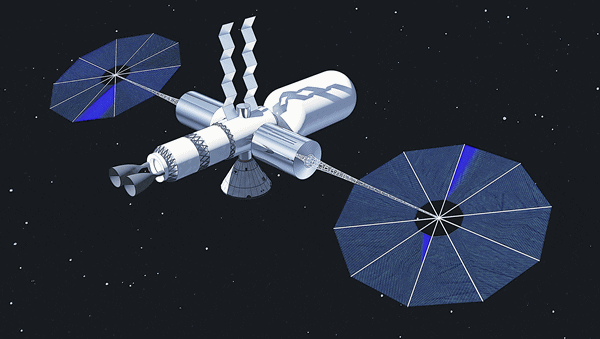Space tourists and NASA astronauts both require similar services
A space hotel design by Massachusetts Institute of Technology (MIT) recently won a prestigious NASA graduate design competition. MIT’s Managed, Reconfigurable, In-space Nodal Assembly (MARINA) project was designed as a commercially owned and operated space station, featuring a luxury hotel. Mathhew Moraguez and George C Lordos of MIT Department of Aeronautics and Astronautics and member of the Strategic Engineering Research Group explain the design concept and how the whole experience will resemble that of a luxury yacht charter holiday exploring space
What are the key aspects of your space hotel design that attributed in winning the prestigious competition by NASA?
We feel that one key benefit of our proposal for NASA is technology development at reduced and shared costs. The cost reduction comes from our engineering design which emphasises modularity, standardisation of interfaces and open access to companies of all sizes to provide all kinds of products and services on MARINA. The cost sharing arises because NASA can rent only a small part of the MARINA station, fly astronauts there and perform experiments to develop technology needed for the journey to Mars. The concept works well because the space tourists and NASA astronauts both require similar services while in orbit, i.e. life support, food, gym, etc. These capabilities would be improved over time and would help enable the journey to Mars.
What is the commercial viability of your design, particularly with so much talk going on, and investment being made in space tourism initiatives?
MARINA’s space hotel provides the revenue needed to sustain the station and allow NASA to rent space on the commercial station for lower cost. NASA would do so at reduced cost compared to current International Space Station (ISS) operations because a commercial operator would be running the MARINA station and receive significant revenue from the space hotel as a profitable commercial enterprise.
MARINA would be commercially owned, self-funded and operated for-profit. The price for holidays at MARINA is a critical decision which depends on many variables and will be determined closer to the time by the operator. However, our models and simulations showed that the price could initially be approximately US$ 5m and not more than US$ 10m per person for a two week holiday, including transportation and accommodation. Our research and modeling work has shown that there can be sufficient demand around these price points. The holiday price would fall over time as the cost of access to space comes down as a result of reusable rockets and competition among commercial providers.
NASA currently spends US$ 3.5 billion per year to support the ISS. Our modeling showed that MARINA would only cost NASA about US$ 360m per year in rent and other fees payable to MARINA’s commercial owner and operator, meaning that NASA could save 16 percent of its human spaceflight budget and use these savings to fund its journey to Mars.

What are the most interesting features of the luxury space hotel?
The fact that all guest rooms will have identical shape, size and Earth views yet each room will be individually decorated to resemble the Captain’s Cabin from famous 18th-, 19th- and early 20th century ships of exploration of the Earth’s poles. The doors of the guest rooms open to a common space, where guests can drink, dine and mingle with NASA astronauts around a striking, Earth-facing cupola window. The whole experience will resemble that of a luxury yacht charter holiday mixed with participation in the exploration of the last frontier facing humanity.
How is it different from a typical luxury hotel on earth in terms of comfort and facilities?
The main difference is the small size and the micro-gravity environment. The small size makes MARINA’s space hotel more comparable to the experience of staying in a luxury boutique hotel on Earth. The microgravity environment means that designers will have to come up with new, more comfortable solutions to support basic human functions such as eating, sleeping, recreation, bathing and use of WC. Other than that, the ratio of one staff to four guests will assure the delivery of high quality service, in keeping with the luxury design.

By when do you foresee a luxury hotel in space actually become a reality? How will it enhance the space tourism experience?
If a decision to go ahead were to be made today, MARINA and its space hotel could be operational by the mid 2020’s, in time to replace the ISS which is due to be retired around then.
Do you believe that private companies who are investing billions in space tourism projects should also include space hotel in their offering ? Can your space hotel design be customised in the future?
As the cost of access to space continues to fall thanks to the advent of reusable rockets, the development of new human-rated spacecraft and the increasing competition among launch providers, space tourism has every chance to be about a lot more than a half-hour thrill ride to the edge of space and back. The space hotel internal design is of course fully open to customisation by the investor/ developer, according to their business plan and market research.
Any other interesting factor regarding space holidays?
Orbital space holidays and even holidays on the surface of the Moon will both enable and be enabled by the increased number of human flights into space. The substantial revenue from orbital and lunar space tourism will in turn accelerate technology development.

